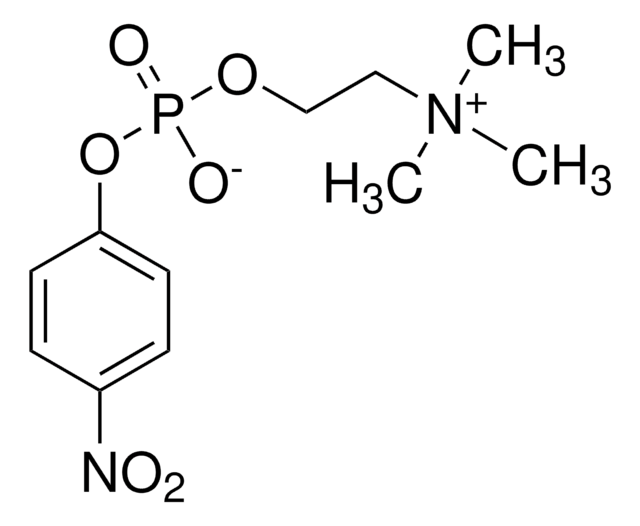123943
Bis(4-nitrophenyl) phosphate
99%
Sinonimo/i:
Di-4-nitrophenyl hydrogenphosphate
About This Item
Prodotti consigliati
Saggio
99%
Forma fisica
solid
Punto di fusione
172-175 °C (lit.)
Stringa SMILE
OP(=O)(Oc1ccc(cc1)[N+]([O-])=O)Oc2ccc(cc2)[N+]([O-])=O
InChI
1S/C12H9N2O8P/c15-13(16)9-1-5-11(6-2-9)21-23(19,20)22-12-7-3-10(4-8-12)14(17)18/h1-8H,(H,19,20)
MHSVUSZEHNVFKW-UHFFFAOYSA-N
Applicazioni
Avvertenze
Danger
Indicazioni di pericolo
Consigli di prudenza
Classi di pericolo
Acute Tox. 2 Oral
Codice della classe di stoccaggio
6.1A - Combustible acute toxic Cat. 1 and 2 / very toxic hazardous materials
Classe di pericolosità dell'acqua (WGK)
WGK 3
Punto d’infiammabilità (°F)
Not applicable
Punto d’infiammabilità (°C)
Not applicable
Dispositivi di protezione individuale
Eyeshields, Faceshields, Gloves, type P2 (EN 143) respirator cartridges
Certificati d'analisi (COA)
Cerca il Certificati d'analisi (COA) digitando il numero di lotto/batch corrispondente. I numeri di lotto o di batch sono stampati sull'etichetta dei prodotti dopo la parola ‘Lotto’ o ‘Batch’.
Possiedi già questo prodotto?
I documenti relativi ai prodotti acquistati recentemente sono disponibili nell’Archivio dei documenti.
I clienti hanno visto anche
Il team dei nostri ricercatori vanta grande esperienza in tutte le aree della ricerca quali Life Science, scienza dei materiali, sintesi chimica, cromatografia, discipline analitiche, ecc..
Contatta l'Assistenza Tecnica.












